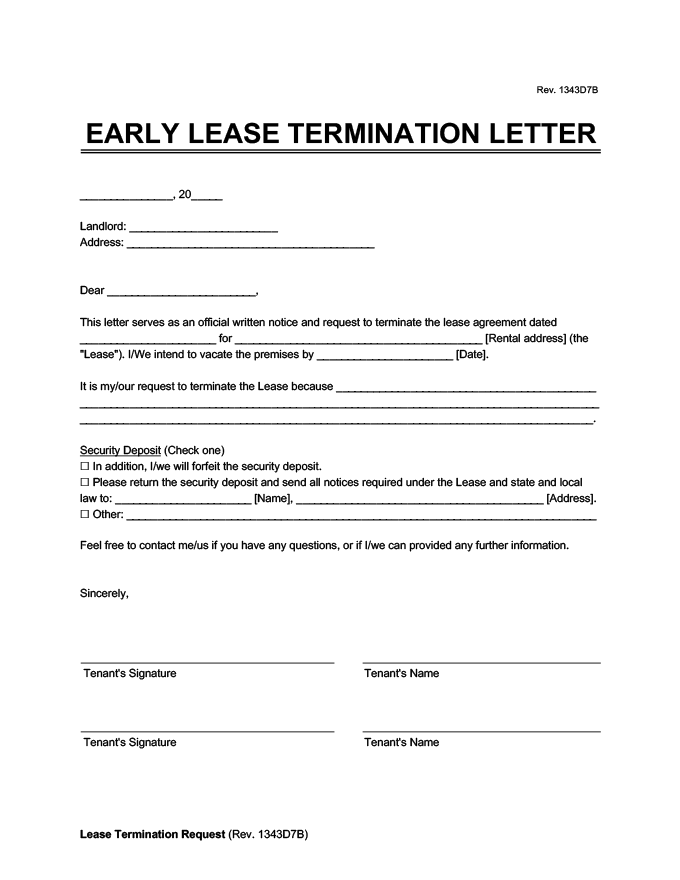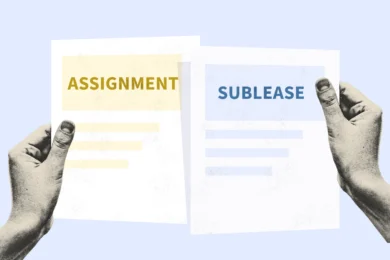Have your landlord’s actions or inactions interfered with your use or enjoyment of your rental property? If this situation applies to you and other specific conditions are true, you may be forced to conduct a constructive eviction to remove yourself from the situation. Below, you can learn about this process, whether it applies to your circumstances, and how to proceed.
Defining Constructive Eviction
Constructive eviction occurs when a tenant is forced to leave a property because the landlord’s actions (or failure to act) significantly impede the tenant’s use of the property. It’s unlike a regular eviction notice, which involves the landlord issuing notice to the tenant that they need to leave.
A constructive eviction relies on proving the landlord failed to meet the lease’s written and implied terms. Each state has different requirements for non-compliance and constructive evictions, so review your state’s laws before you proceed.
Complete vs. Partial Constructive Eviction
Complete constructive eviction occurs when the tenant must leave the rental premises altogether because the tenant’s use of the property has been substantially hindered.
Partial constructive eviction may apply if you cannot use a portion of the property. Rather than vacating the premises entirely, you may be able to reduce or temporarily stop paying rent while using the rest of the unit.
Conditions for Constructive Eviction
For constructive eviction to apply, you must show that the landlord has failed in their duty to ensure the tenant’s right to quiet enjoyment. Typically, a constructive eviction defense must meet the following conditions:
- The landlord failed to resolve an issue, violating the tenant’s right to quiet enjoyment. The right to quiet enjoyment is an implied warranty of any residential rental agreement, even if the lease doesn’t explicitly state it.
- The landlord received notice from the tenant about the issue and failed to respond or fix the problem.
- The tenant waited a reasonable amount of time for the landlord to fix the issue before quitting the premises.
Different states offer definitions in their statutes under which constructive eviction may apply. For example, Cal. Civ. Code § 43.1 states that a landlord in California is responsible for keeping a building they rent in a fit condition for human occupation and making any repairs to issues that make it unlivable.
Constructive Eviction Is a Defense a Tenant Uses in Court When
- A rental unit becomes uninhabitable, and
- The tenant moves out because of the unit’s unsuitability for living, and
- The landlord sues the tenant for back-owed rent.
Constructive Eviction Is Not
- A defense a tenant can use when the livability issue is due to their action or inaction.
- Something the tenant can claim if they still live in the unit.
- The same as rent abatement (this process only suspends rent payments).
Reasons for Constructive Eviction
If the landlord’s action or inaction breaches the implied warranty of quiet enjoyment by making the premises uninhabitable, you may have grounds for a constructive eviction. Depending upon your specific state laws, breaches of this covenant of quiet enjoyment by a landlord may take various forms:
- Unreasonable entry: Entering your unit without proper notice.
- Harassment: Harassing you via threats, intimidation, and verbal abuse.
- Failure to address maintenance or repair issues: Failing to address pest infestations, heating or cooling failures, mold growth, or plumbing leaks.
- Disruptive activities: Allowing disruptive activities on the property or failing to take appropriate steps to address the disturbances.
- Unauthorized alterations: Implementing unit alterations without notifying the tenant or seeking their approval.
- Utility shut-offs: Purposefully shutting off a tenant’s utilities.
- Retaliatory actions: Retaliating against a tenant after they exercise their rights.
How to Build a Case for Constructive Eviction
Step 1 – Ensure Your Case Qualifies as Constructive Eviction
Establish the conditions that make you want to leave the premises. Review the causes to ensure the conditions resulting from the landlord’s breach of the covenant of quiet enjoyment have significantly obstructed your use of the property. You cannot use a constructive eviction defense if you were fully or partially responsible for the adverse conditions.
Step 2 – Inform the Landlord of the Issue
Inform the landlord of the problem and give them a reasonable amount of time to rectify it. Some states establish statutory timelines for specific repairs or issues. For example, in Nebraska, the landlord must take reasonable steps to complete repairs within 14 days of receiving notice from the tenant, per Neb. Rev. Stat. § 76-1425.
Maintain records of all communication with the landlord regarding the livability issue, including written letters, notes, emails, and text messages. Keep a log of any phone calls or discussions, along with the date, time, and subject addressed. If possible, send follow-up emails after any verbal discussion to provide documented proof.
Step 3 – Seek Outside Assistance
Contact building code enforcement, the health department, or fire inspectors to report health and safety issues. Reports, inspections, and investigations can provide critical evidence to support your claim.
Tip When Seeking Outside Assistance
You may also contact professionals who handle issues related to your livability problem. For example, if you have a pest control issue, contact a pest control professional and ask for a written assessment of the extent and severity of the issue. Use these expert opinions and statements as evidence to further support your constructive eviction defense.
Step 4 – Vacate the Property
If the landlord fails to cure the impediment within a reasonable timeframe, quickly move out of the property. Avoid remaining too long on the property, as the judge may take this as evidence that the hindrance resulting from the landlord’s action or inaction was not significant.
Handling Personal Property When You Leave
Take your possessions with you when you leave. If you leave personal property on the premises, the landlord may claim you were still using the unit. You may also have trouble recovering the property later if they claim you abandoned it.
Step 5 – Tell the Landlord You Moved Out
Provide written notice to your landlord that you moved out of the unit. Explain that you vacated the premises because the landlord’s actions or inactions resulted in a substantial impediment to your use and enjoyment of the property. Include the dates and times you contacted the landlord about the issue.
Continue paying rent to safeguard your situation. If you have a legitimate case, you can sue the landlord to recover the lost funds.
Halting rent payments, even in unlivable situations, may constitute a breach of your lease agreement in jurisdictions that don’t have strong tenant protections. It’s best to continue paying rent and recoup the losses later.
Step 6 – Consider Going to Court
You may consider suing the landlord for breach of contract. This way, you can obtain damages due to their neglect or adverse actions. In some states, you may need to continue paying rent to meet your contractual lease obligations and sue to recoup those rent payments if you prevail.
Please be aware that a landlord may sue you for leaving the property if they don’t believe a constructive eviction has occurred. Prepare to go to court to prove your case of constructive eviction.
What Are the Remedies for Constructive Eviction?
Depending on the state, a tenant could seek the following remedies for constructive eviction:
- Not paying rent for the remainder of the lease
- Suing the landlord for damages, including mental, physical, and financial losses
- Completing repairs and deducting the costs from future rent
If you suffered hardship as a result of a constructive eviction, speak with an attorney to discuss legal options in your state.
How Can Landlords Prevent Constructive Eviction?
If you’re a landlord, you can prevent constructive eviction by taking the following actions:
- Conducting prompt repairs: Complete repairs as soon as possible. This proactivity establishes a history of reliable and reasonable effort to maintain and repair the premises.
- Providing a repair plan: Inform the tenant of your timeline for completing repairs so they know you plan to address the issue.
- Offering an alternative: Provide the tenant with an alternative living situation, such as a hotel or another rental unit, while you complete the necessary repairs.
- Reducing the rent: Consider lowering the rent or offering rent abatement for the duration of the problem and related repairs.
- Mutually terminating the lease: Create a mutual agreement for early lease termination if the landlord can’t restore the unit to a habitable condition.
The Bottom Line
If your living situation is no longer habitable and the landlord won’t take action to fix it, you may face constructive eviction and move out yourself without financial or legal repercussions. It’s important to meet all the conditions of a constructive eviction; otherwise, you may violate your lease’s terms.
Frequently Asked Questions
Do I Have to File a Lawsuit for a Constructive Eviction?
You don’t have to file a lawsuit for a constructive eviction. However, you should maintain documentation of the landlord’s failure to rectify the problem and your attempts to achieve a resolution within a reasonable time frame. In most states, constructive eviction can serve as a defense if your landlord sues you for missing rent payments on the vacated property.
What If I Haven’t Been Constructively Evicted, But I Move Out Early?
If you haven’t been constructively evicted but you move out, you will be in violation of your lease agreement. The landlord may sue you to recover rent for the remainder of your lease term, as well as other related expenses, as permitted by state and local law.
Do I Need a Lawyer for Constructive Eviction?
You don’t need a lawyer for constructive eviction, but you may benefit from legal assistance. An attorney can help you navigate the process and ensure you have the appropriate grounds and documentation to support your constructive eviction claim. Ensure that you understand your rights, confirming that a landlord doesn’t evict you for no reason.
Can the Landlord Dispute My Claim of Constructive Eviction?
The landlord can dispute your claim, so it’s important to document every step of the process.
The tenant has the burden of proof in a constructive eviction case. Therefore, you must be able to show the extent and severity of the breach of the implied warranty of quiet enjoyment, when and how you communicated the issue to the landlord, and how long you gave them to repair it before you vacated the unit.



